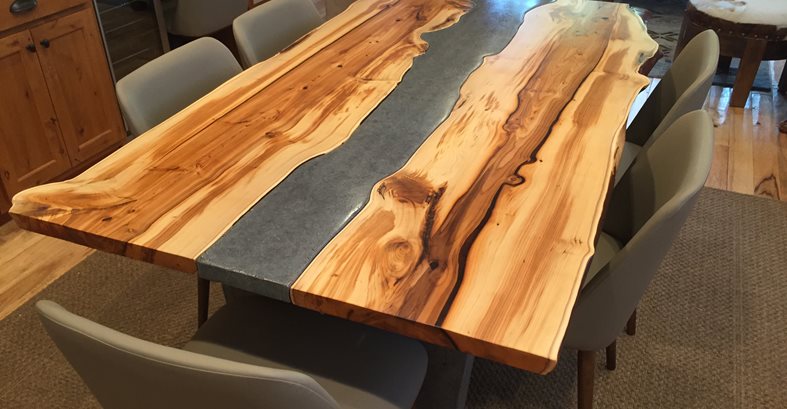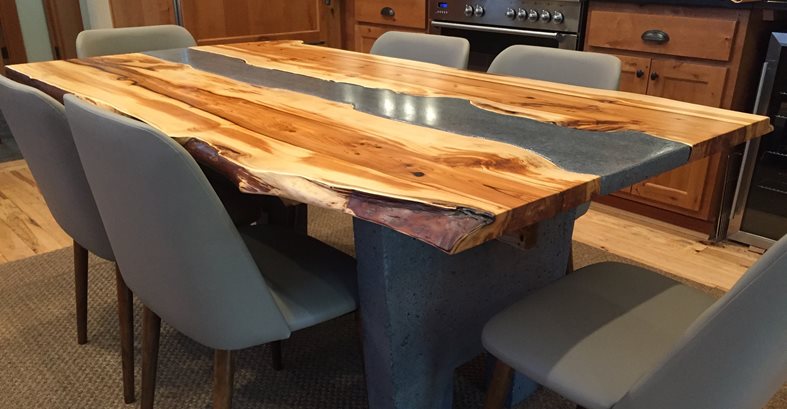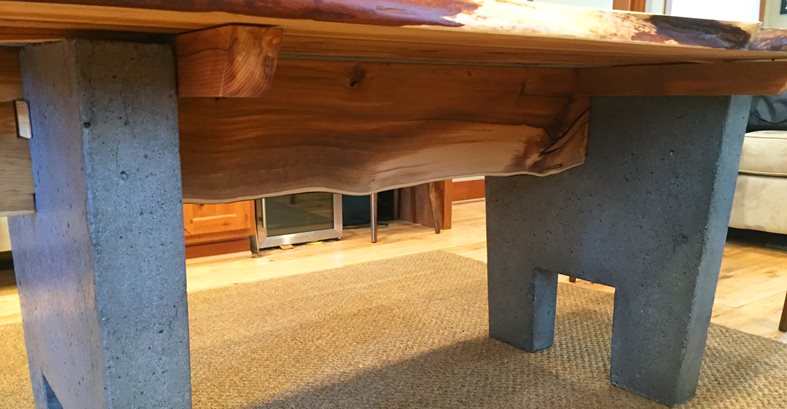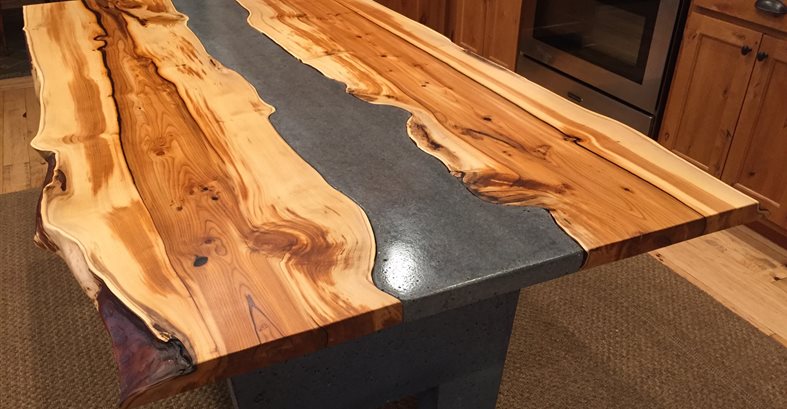- Concrete Furniture Home
- Concrete Furniture Photos
- Concrete Furniture Types
- Concrete Coffee Tables
- Outdoor Concrete Furniture
- Concrete Office Furniture
- Concrete Storage Furniture
- Concrete Ping Pong Tables
- Design Ideas
- Concrete Furniture Design Ideas: Behind-the-scenes info and photos
- Free Concrete Furniture Catalog
- Related Information
- Learn How to Make Bent Concrete Furniture
- Concrete Contractors: Find GFRC Mixes for Precast Concrete
Hand-Crafted Table Blends Concrete and Wood
Project submitted by Jesse Wood, Crafthammer Design, Kirkland, Wash.Concrete and wood are a match made in heaven, especially when it comes to furniture design. Their unique organic qualities complement each other beautifully, creating a yin-yang effect that strikes a balance between two opposites. For this stunning dining table, yew wood and colored concrete were combined to create a harmonious marriage of contrasting materials.
“The clients wanted something that would be a conversation piece for their high-end vacation home in Washington’s Suncadia Resort community. They also wanted something that would be durable, since they have regular renters throughout the year,” says table designer Jesse Wood of Crafthammer Design, Kirkland, Wash.
Wood specializes in making furniture, fire features, countertops, and outdoor accents that combine art, design, and craftsmanship. In particular, he likes blending different materials such as natural wood, stone, concrete, and metal to make each of his creations unique.
“I have been combining concrete and wood elements in my tables now for some time. I like this approach because it’s nice to break up a large slab by introducing different colors and textures,” he says.
For this piece, Wood used a standard bagged concrete mix integrally colored cobalt blue to contrast with the lighter yew wood. “The clients wanted a blue-gray look to the table and the base. Slabs of yew wood worked great in contrast because it’s a hard wood with a very interesting grain,” he says.
To lock the table components together, Wood notched out holes in the supporting cross member and then used angled wooden pins made out of the same material as the tabletop. He then tapped in the pins to secure the concrete base pieces in place. “This method produced great results despite being more time consuming. It was also easier than using threaded screws and epoxy,” he says.
Wood is a recent convert to using concrete as an artistic medium. Now that he has discovered its design versatility and organic nature, he turns to it often. “I have been using concrete in my furniture for a few years now. I had never used it in the past except as footings for a deck here and there. As an artist, I love working with concrete because I am only limited by my form-making skills and my imagination.”
Materials used:
Concrete mix: Sakrete 5000
Integral pigment: Buddy Rhodes pure pigments for concrete, in cobalt blue
Contractor:
Jesse Wood
Crafthammer Design, Kirkland, Wash.
See another project combining concrete and natural wood:
Concrete and Walnut Sink Add Character to Rustic Barn
Submit Your Own Project Photos
Get More Concrete Furniture Design Ideas
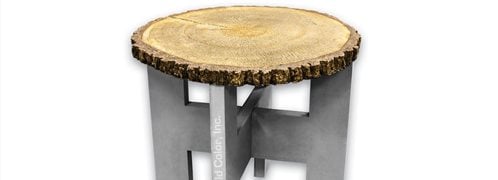 Urethane Furniture Molds
Log tables, benches and more
Urethane Furniture Molds
Log tables, benches and more
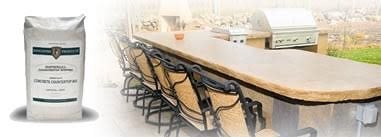 Imperial Mix
Lightweight, strong, minimal shrinkage
Imperial Mix
Lightweight, strong, minimal shrinkage
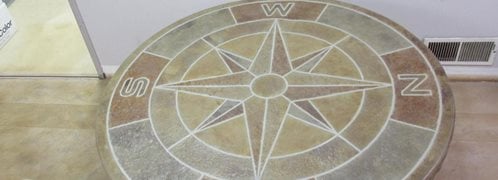 Table Top Molds
Live edge, compass, flags, checkboard, etc.
Table Top Molds
Live edge, compass, flags, checkboard, etc.
